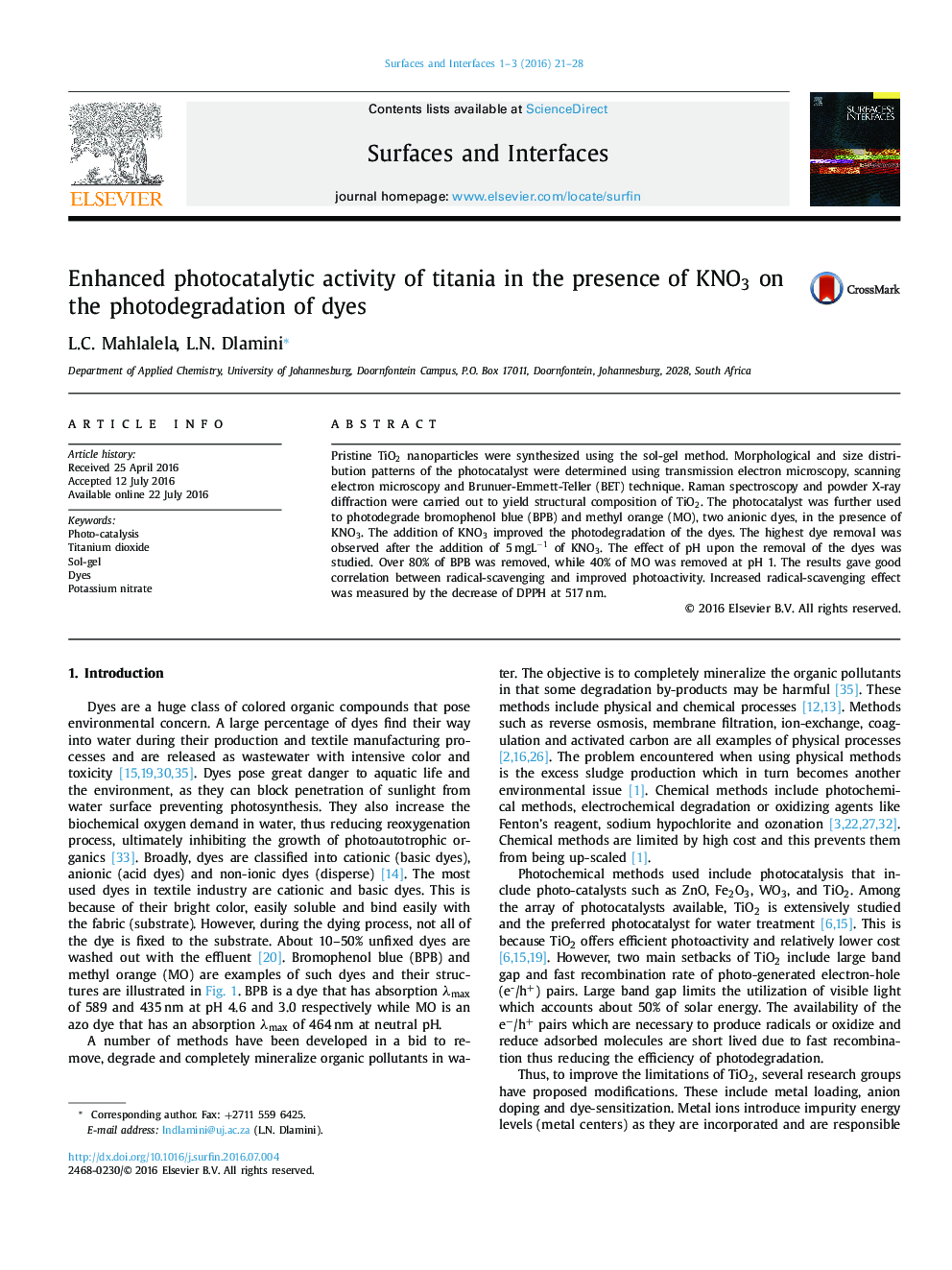| Article ID | Journal | Published Year | Pages | File Type |
|---|---|---|---|---|
| 614021 | Surfaces and Interfaces | 2016 | 8 Pages |
Abstract
Pristine TiO2 nanoparticles were synthesized using the sol-gel method. Morphological and size distribution patterns of the photocatalyst were determined using transmission electron microscopy, scanning electron microscopy and Brunuer-Emmett-Teller (BET) technique. Raman spectroscopy and powder X-ray diffraction were carried out to yield structural composition of TiO2. The photocatalyst was further used to photodegrade bromophenol blue (BPB) and methyl orange (MO), two anionic dyes, in the presence of KNO3. The addition of KNO3 improved the photodegradation of the dyes. The highest dye removal was observed after the addition of 5Â mgLâ1 of KNO3. The effect of pH upon the removal of the dyes was studied. Over 80% of BPB was removed, while 40% of MO was removed at pH 1. The results gave good correlation between radical-scavenging and improved photoactivity. Increased radical-scavenging effect was measured by the decrease of DPPH at 517Â nm.
Related Topics
Physical Sciences and Engineering
Chemical Engineering
Colloid and Surface Chemistry
Authors
L.C. Mahlalela, L.N. Dlamini,
